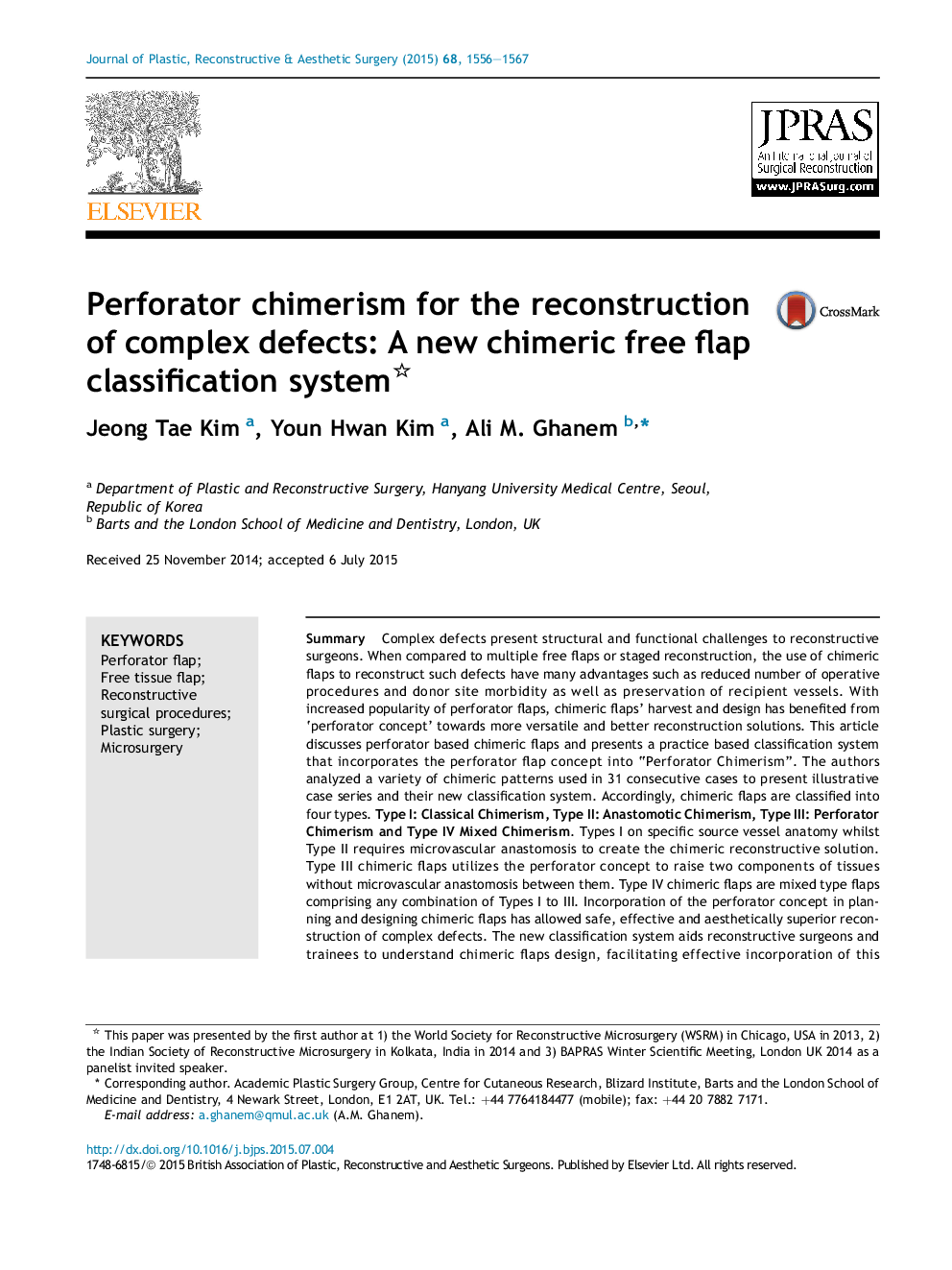| Article ID | Journal | Published Year | Pages | File Type |
|---|---|---|---|---|
| 4117056 | Journal of Plastic, Reconstructive & Aesthetic Surgery | 2015 | 12 Pages |
SummaryComplex defects present structural and functional challenges to reconstructive surgeons. When compared to multiple free flaps or staged reconstruction, the use of chimeric flaps to reconstruct such defects have many advantages such as reduced number of operative procedures and donor site morbidity as well as preservation of recipient vessels. With increased popularity of perforator flaps, chimeric flaps' harvest and design has benefited from ‘perforator concept’ towards more versatile and better reconstruction solutions. This article discusses perforator based chimeric flaps and presents a practice based classification system that incorporates the perforator flap concept into “Perforator Chimerism”. The authors analyzed a variety of chimeric patterns used in 31 consecutive cases to present illustrative case series and their new classification system. Accordingly, chimeric flaps are classified into four types. Type I: Classical Chimerism, Type II: Anastomotic Chimerism, Type III: Perforator Chimerism and Type IV Mixed Chimerism. Types I on specific source vessel anatomy whilst Type II requires microvascular anastomosis to create the chimeric reconstructive solution. Type III chimeric flaps utilizes the perforator concept to raise two components of tissues without microvascular anastomosis between them. Type IV chimeric flaps are mixed type flaps comprising any combination of Types I to III. Incorporation of the perforator concept in planning and designing chimeric flaps has allowed safe, effective and aesthetically superior reconstruction of complex defects. The new classification system aids reconstructive surgeons and trainees to understand chimeric flaps design, facilitating effective incorporation of this important reconstructive technique into the armamentarium of the reconstruction toolbox.
